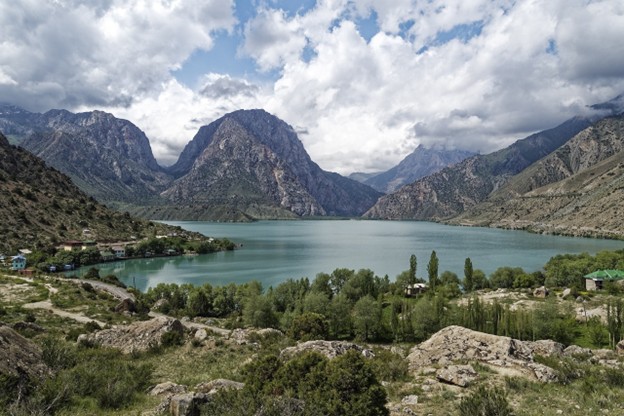China is deepening its cooperation with Central Asia to secure access to the region’s vast supply of raw earth materials.
Kazakhstan, a major player in the uranium and critical minerals market, is one of Beijing’s main targets. The Central Asian state is positioning itself as a strategic mineral hub to attract foreign investment and diversify its partnerships. With increased geopolitical competition for copper,
zinc, lead and nickel, China is racing to deliver those technical and economic benefits to Kazakhstan.
Western democratic states are growing increasingly concerned over the level of China’s involvement in the region and its ability to exact limited control over strategic resources. Beijing offers Kazakhstani
leaders job creation, technology transfer, and new economic channels, in an attempt to replace Russia’s earlier dominance in the region. Yunis Sharifli, of the Jamestown Foundation, says that Kazakhstan aims
to balance Chinese involvement by “actively pursuing partnerships with the United States, European Union, and Japan, while incorporating local content and knowledge transfer into future agreements.”
Last June China and Kazakhstan formalized a landmark agreement to construct one of Central Asia’s most advanced copper smelting facilities by the end of 2028, capable of producing 300,000 tons of copper annually. At a cost of over $1.5 billion, the facility represents a transformative integration of upstream and downstream operations, combining access to one of the world’s largest copper mines with state-of-the-art processing technology. China will bring 1,000 jobs to the country with this single
project, according to the Astan Financial Center.
In March, Gabidulla Ospankulov, Chairperson of the Investment Committee of the Kazakh Ministry of Foreign Affairs, spoke on a panel discussing “Investments, Supply Chains, and National Legislation” at
the Prospectors and Developers Association of Canada’s 2025 convention, notes Sharifli. He spoke about his country’s growing geostrategic position as a crossroads in the global supply chains among China, the
United States, and the European Union. Currently, through its Belt and Road Initiative (BRI) China controls approximately 70% of the world’s capacity for processing critical minerals such as lithium,
cobalt, rare earth elements, and graphite. During the last two years, China increased joint ventures with Kazakh mining companies to lock in supply deals and expand refining capabilities. As hard as Western
nations are pushing back on China’s overseas investment strategy to diversify its supply, Beijing is equally strident about ramping up its efforts to create joint ventures and control Kazakh mining companies.
Last November, China’s Jiaxin International Resources Investment Company opened its first tungsten production plant in Kazakhstan in the Almaty region, according to the Ministry of Industry and Construction of the Republic of Kazakhstan. Beijing understands Astana’s financial, technological, and human resource constraints in extracting mineral resources. Xi Jinping also recognizes that Western advanced economies need these same resources. Sharifli says that one of the most notable areas of Chinese-Kazakhstan cooperation in critical minerals thus far has been an agreement signed last month between Kazakh First Deputy Prime Minister Roman Sklyar and the PRC’s East Hope Group General Director, Changjun Meng. It establishes plans for a vertically integrated non-ferrous metals production complex for aluminum, copper, and silver. The agreement, he says, includes a $12 billion investment for the creation of approximately 10 thousand jobs and the establishment of an industrial ecosystem.
The Prime Minister of Kazakhstan says the Chinese-led project promises to introduce cutting-edge metallurgical technologies while expanding his country’s presence in international markets for finished metal products.
The OCSE Academy in Biskek says that “Kazakhstan hosts the largest number of projects and receives the largest amount of Chinese investment” with Turkmenistan the second largest recipient of Chinese
financing. Historically China focused primarily on securing access to raw materials throughout Central Asia. Today, Beijing is adapting to Kazakhstan’s strategic priorities for domestic value addition.
The United States is responding to these developments by increasing its diplomatic ties with Kazakhstan and the other Central Asian states. Washington is calling on the region not to lean too hard into China or
Russia. The US is offering development financing through the US International Development Finance Corporation to fund non-Chinese infrastructure and mineral projects. Washington also initiated talks to
collaborate on rare earth and uranium projects to thwart Chinese and Russian effort to control global critical mineral supplies.
Daria Novak served in the U.S. State Department
Photo: A Tajikistan scene (Pixabay)
